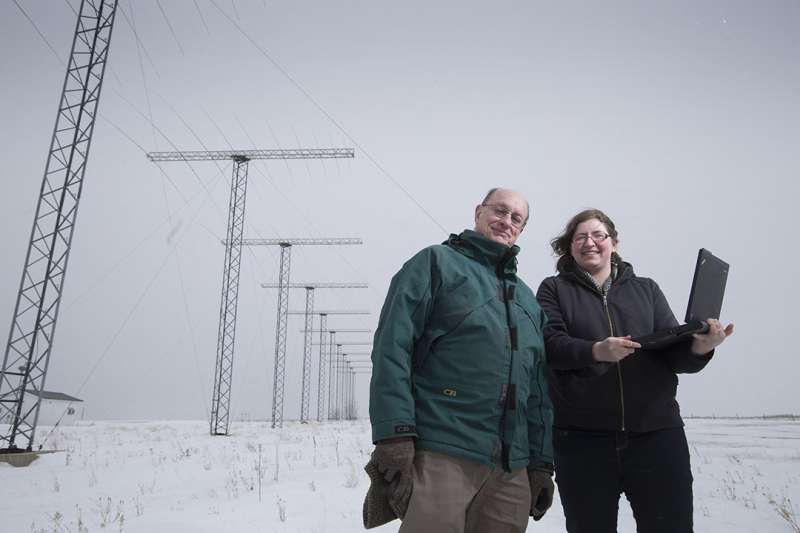New tool helps minimize impact of solar activity

University of Saskatchewan researcher Lindsay Goodwin has developed a new way to measure the impact of solar activity on the ionosphere as indicated by northern lights and geomagnetic storms. The ionosphere is the upper part of the atmosphere.
Scientists could use her new database of nearly 300 simulations of electric fields to forecast more efficiently and accurately the occurrence of northern lights and the effects of geomagnetic storms.
"My research could help ensure that all the communication services we rely on in our everyday lives keep working properly," said Goodwin, who is a recent U of S Ph.D. graduate in physics.
Her new method will help scientists predict, and possibly prevent, the negative effects of space weather on the International Space Station and on communication systems, such as those used by airplanes flying over the polar regions. If damaged, the networks of Global Positioning Systems and communication satellites that sustain banking transactions, TV signals, and the Internet could be heavily disrupted.
Goodwin is the first to determine with precision the impact of electric fields on the ionosphere. The ionosphere's main component, a fluid-like plasma, is very sensitive to changes in electric and magnetic fields caused by solar activity.
The work is challenging because the ionosphere is subject to currents, winds and waves.
"We try to determine ahead of time how we will make the observations, but nature often does something unexpected. It's very much like solving puzzles," said U of S physics professor Jean-Pierre St.-Maurice, Goodwin's supervisor and Canada Research Chair in Environmental Sciences.
Goodwin created her database based on a 1990s' simulation. She re-ran it using today's computers and got more accurate results because of better modern processing powers. She has also developed state-of the-art software to properly interpret the data from powerful radars used to study the ionosphere.
"I have found specific ways to make measurements that easily predict whether in a certain area of the ionosphere there is a lot of electric activity," she said. "This can help measure how solar activity will affect that area."
Funds have been invested in her project by the Canada Research Chairs program, the Canada Foundation for Innovation, the federal agency NSERC, the Canadian Space Agency, the European Space Agency and the U.S. National Science Foundation.
Goodwin was always obsessed with understanding deep space and galaxies until she realized that there are still a lot of unanswered questions about space close to Earth.
"Why should I focus on physics problems so far away when I have so much to learn about my own planet?" she said.
Provided by University of Saskatchewan




















